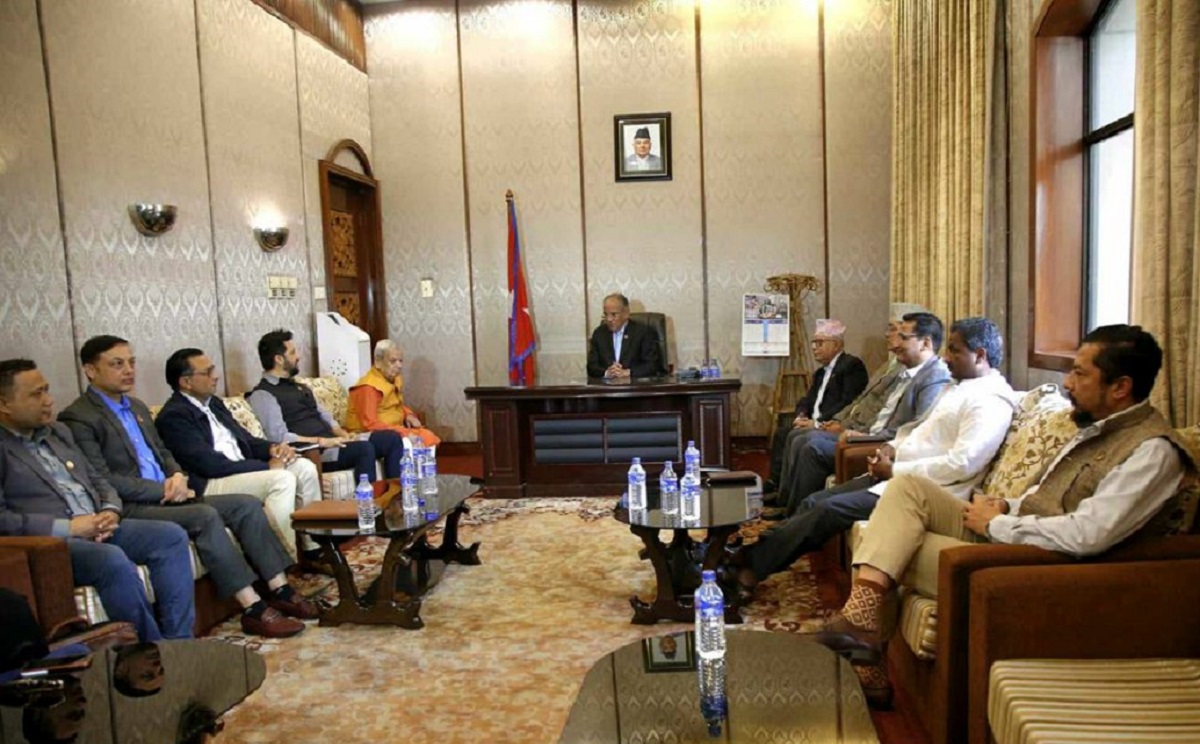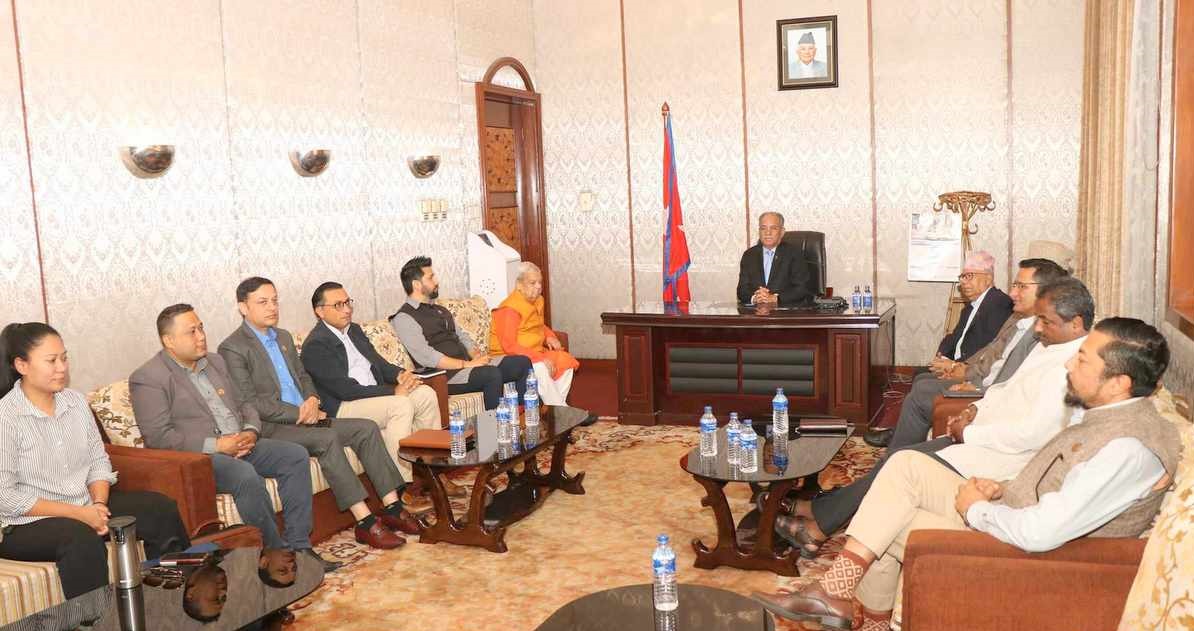Misinformation, disinformation, false news and trial by social media

KATHMANDU: MARCH. 7 – Last week, the Cyber Bureau of Nepal Police issued a stern warning against creating and posting content on online platforms that could affect investigations of crimes of serious nature.
The bureau, in its statement, said that it would take action as per Section 47 of the Electronic Transactions Act, 2008 against anyone found creating and uploading photos or videos containing false or incorrect information on YouTube and TikTok, among other social media platforms.
Already, five YouTube posts have been taken down for sensationalising issues and spreading rumours. Cases have also been filed against at least nine people for violating the law, according to Senior Superintendent Nabindra Aryal, spokesperson for the bureau.
“The statement has been issued in coordination with the Press Council to inform the general public as many are even disclosing minors’ identities, which itself is a crime,” Aryal told the Post.
“We continue to monitor misinformation as well as those who sensationalise issues or spread rumours which can result in chaos or violate the privacy of others.”
The warning from the Cyber Bureau follows growing calls from various quarters of society calling on the Nepal Police to crack down on the spread of rumours and misinformation on platforms like YouTube surrounding an ongoing investigation into a rape charge by a minor against actor Paul Shah.
YouTube lately has emerged as a notorious platform in Nepal to spread misinformation. On countless channels, lawyers and law enforcers say, videos that can affect investigations and harm people’s privacy have been published.
Ever since Shah has been taken into custody, hundreds of videos have appeared where information of all kinds—mostly unsubstantiated—is available, most of which identifying the minor in direct violation of her rights and prevailing laws. A section of the public and some established figures from the film fraternity like Pooja Sharma and Jaya Kishan Basnet, to name a few, are even defending the accused, and the narrative set by them could influence the investigation, according to experts.
Former and incumbent police officials the Post spoke to said the ubiquity of social media puts immense pressure on investigating officials and even complicates the investigation.
Dipendra Adhikari, a former inspector who has been part of several landmark investigations, says technology can be a boon for law enforcers, but it has its pitfalls.
“Social media and YouTube channels can be a good servant but a terrible master,” said Adhikari. “With people’s easy access to social media platforms and their freedom to post what they wish, at times, investigating officials tend to get swayed.”
Recent videos on YouTube and unsubstantiated reports on various websites and social media channels are a stark reminder of how trials by social media can distort information and even influence the investigation.
“This could lead to erosion of trust in the law enforcement agency,” said Adhikari. “People have become more aggressive and often raise questions about police investigations due to misinformation which they get through various channels.”
In 2018, Nepal Police made a spectacular bungling in the Kanchanpur incident, now known as the Nirmala Pant rape and murder case. Then too, a barrage of websites and social media posts and YouTube videos added to the confusion and chaos surrounding the case, which is yet to be solved.
Police officials admit that they were under huge pressure given multiple reports, some factual and some fictitious, social media campaigns and YouTubers’ assumptions, at times passing their judgments even before the law enforcement agency could conclude its investigation.
According to Senior Superintendent Bishnu Kumar KC, the Nepal Police spokesperson, social media reacts quickly and demands prompt answers, obstructs police investigation and creates undue pressure on investigating officers.
“Investigation is a long process; it takes time. These days, the law enforcement agency works under huge pressure,” said KC. “Our job is to conclude the investigation thoroughly, in a free and fair manner. A hurried investigation can get botched up.”
Umesh Shrestha, who produced a 30-part series on the Nirmala Pant case, agrees that social media can play an important role in setting narratives that influence police investigation. A seasoned journalist, Shrestha says he too had started believing the misinformation circulating on social media and YouTube channels surrounding the Nirmala Pant case before he himself decided to report from ground zero.
“Fake news spreads like wildfire,” Shrestha told the Post. “YouTubers and even some online media publish content which the public supports no matter whether it’s right or wrong. They do it for engagements and views so that they can earn good money from the content.”
But not everything posted on social media is fake or whatever the police have to comment on a case is correct, adds Shrestha, the editor of Nepal Fact Check. “It’s a journalist’s job to cross-verify any information before it is published.”
But verification aside, the ongoing furore over the rape allegation against Shah also puts the spotlight on individuals and even newsrooms which have displayed utter disregard for the laws of the land and the plaintiff’s rights, by revealing the minor’s identity in their opinions and news reports.
The digression from standard principles protected by the law has also attracted strong condemnation from the Press Council, National Human Rights Commission and National Women Commission, which have issued statements against YouTubers and websites engaged in speculation and misinformation in favour or against Shah in the course of the ongoing investigation.
“Investigation into a crime of serious nature should be carried out in a confidential, fair, independent and fear-free manner under the principles of criminal justice,” reads the statement by the National Human Rights Commission.
The right to confidentiality and justice are fundamental rights enshrined in Nepal’s constitution and the Criminal Penal Code. Nepal is also a party to the Universal Declaration of Human Rights, 1948 and the International Covenant on Civil and Political Rights, which obligate the state to ensure those rights.
Confidentiality and the fundamental rights of the plaintiff aside, misinformation and trial by social media not only impacts crime investigation but also affects the victim’s mental health, according to advocate Radhika Khatiwada, who is representing the minor’s case against Shah.
“Such misinformation victimises the victims more,” Khatiwada told the Post. “But following the Cyber Bureau’s warning, a lot of misleading information has been taken down.”
While misleading content and fake news may have been taken down in the course of police action or voluntarily in the wake of the stern warning from the Cyber Bureau and rights bodies, unchecked misinformation, according to legal and law enforcement experts, creates a conducive environment for chaos and fosters mistrust in the government.
“It’s not just the Cyber Bureau’s job to take action. Both the Press Council and the Ministry of Communication and Information Technology have their roles to douse rumours,” said Hemanta Malla, a former deputy inspector general, lamenting the lack of control of social media.
“If misinformation spreads rapidly, the public blames the victims instead, as a result, the victim might even withdraw the case due to fear and lack of protection,” Malla told the Post.
The fact that misinformation and fake news are rife online, especially on social media and YouTube channels, is not a new development. Nor is it the last. Shah’s case is but one latest example that shows the challenges ahead for the country with digital ambitions as more and more people join the grid.
According to advocate Baburam Aryal, who specialises in cyberlaw, the general public has a lax attitude towards social media and prevailing laws governing the cybersphere, which is demonstrated by mindless and misleading posts.
“Many people have access to the internet today as compared to a decade ago. People who have little knowledge are active social media users and are exposed to misleading content,” said Aryal, who has long advocated for teaching media literacy in schools. “It is necessary to teach people that everything they see on the internet may not be true, and sharing such information could put other people in delusion.”
-Kathmandu Post









